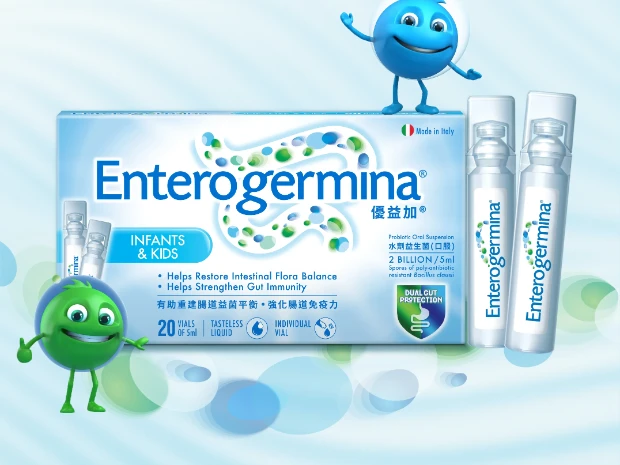
What can you do to protect your gut from antibiotics?
4 mins reading
Antibiotics are a very necessary part of life as humans navigate environments that are constantly fluctuating in both good and bad bacteria. When bad bacteria enters the body, antibiotics take on the mammoth task of fighting them off. In the process, antibiotics can affect the function of the intestinal immune system, the ability to resist infections, and the correct functioning of the metabolism (assimilation of nutrients, facilitating the processes of digestion, absorption and peristalsis).
Bellyaches and digestive difficulties are among the most frequent symptoms after taking antibiotics. These difficulties may include occasional diarrhea, nausea, cramping and excessive gas, and more severe digestive cases may lead to dysbiosis.
At the foundation of these annoyances, there may be an alteration of the intestinal bacterial flora, which can undergo a reduction due to the protective effects of commensal microbes in favor of pathogenic ones. Probiotics are the best ally to maintain balance in this regard. Protection is better than a cure, and when these symptoms put us at risk for periods of gut discomfort, measures need to be taken to keep the upper hand.
Let’s look at some common symptoms caused by antibiotic treatment
Occasional diarrhea or constipation
When the healthy levels of intestinal flora in your gut have been disrupted by antibiotic therapy, it is normal for one’s bowels to either leak, or become totally stagnant. Both conditions can be painful, albeit easily treatable.
Cramping and Bloating
Two other symptoms of lacking gut flora colonies are bellyaches and intestinal swelling. One might be able to avoid their onset by sticking to a very strict dosage and schedule when taking antibiotics.
Nausea
As your good bacteria of the microbiota are wiped out by the medication, it’s not uncommon to experience nausea as a side effect. This may be accompanied by one or more of the aforementioned symptoms.
Let’s take a look at what to eat and what not to eat when during antibiotic treatment
What to eat more of
During antibiotic treatment, it is good to follow a diet rich in fiber, vitamins and antioxidants, especially fruit and vegetables that are rich in vitamin C. It is always recommended to take a probiotic that has proven antibiotic resistance. Here’s everything you need to know:
Fiber
Rice, a simple and quick food to digest, it contains complex carbohydrates that replenish energy and is digested without further straining the stomach, giving the illusion of fiber. In the intestine, rice also helps to block any episodes of antibiotic diarrhea. Yogurt (better if skimmed) and its presence of enzymes can help digestion. It is also a probiotic food, rich in microorganisms that restore the bacterial flora.
Vitamins
Potatoes and carrots work to preserve vitamins and minerals which helps manage fatigue from medicines.
Antioxidants
Asparagus and green tea are rich in Vitamin K. Bananas are effective against any stomach acid and are astringent in the intestine, which helps when antibiotics cause real episodes of acute occasional diarrhea. Also, bananas have the characteristics of a natural supplement: they are very rich in potassium, as well as other vitamins and minerals.
What to eat less of
In many cases, there may be interference between antibiotics and some foods. To avoid other GI irritations, it is a good idea to avoid those foods that can have an irritating effect on the stomach walls and intestine. Let’s look at which ones are best avoided:
Dairy products including all cheeses. Fermenting dairy in the gut can cause upset/watery stool and slow digestion. Skimmed yoghurt is an exception, as it contains probiotics and may help the gut.
Grapefruit and grapefruit juice as they can increase the circulation of the active substance in the antibiotics, which is equivalent to creating the effect of an overdose.
Chocolate, coffee, alcoholic beverages and carbonated soft drinks should be avoided.
Foods rich in calcium and iron, such as dairy products, nuts and seafood.
Probiotics can help protect the gut from antibiotics
Incorporating a probiotic into your routine during your antibiotic treatment gives you the upper hand in preventing gut discomfort before it has had the chance to set in. This way, you’re covered even in the days following the end of your treatment.
The characteristics that a probiotic must have in order to be considered “high caliber” (and therefore entail real benefits) must be faithful to the definition of "probiotic" according to the FAO (Organization for Food and Agriculture) and the WHO (World Health Organization). This definition was also adopted by the Italian Ministry of Health and can be reported verbatim: "Probiotics are live and vital microorganisms that prove capable, once ingested in adequate quantities, to exercise beneficial functions for the body". The function of probiotics is to keep the intestinal flora in balance, thus preventing the "bad" bacteria from gaining the upper hand.
Our product
Enterogermina® scans the gut for intestinal flora imbalance and delivers two billion good bacteria to help with both the condition, and its associated symptoms.
